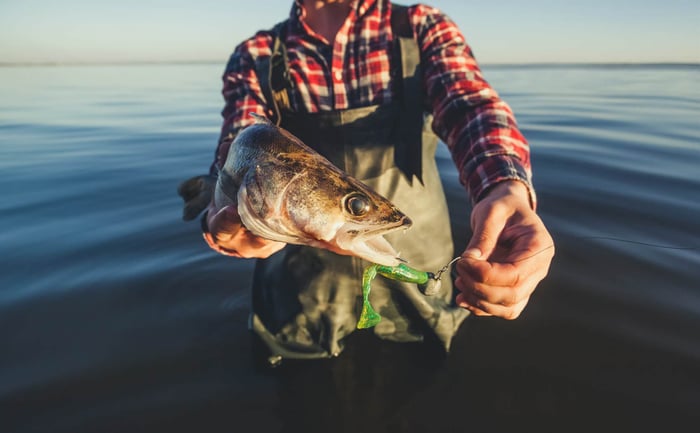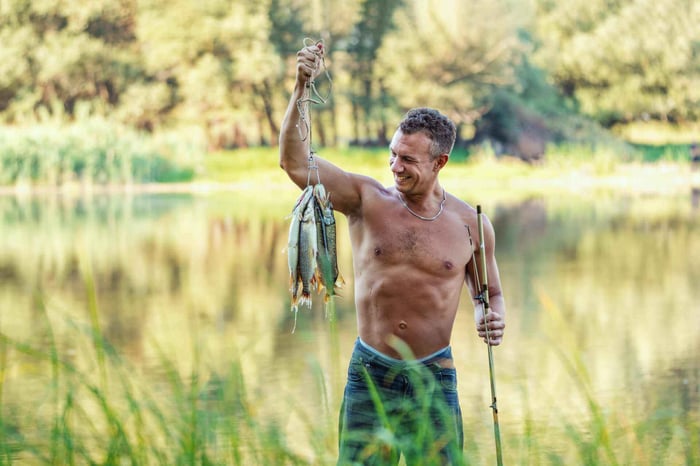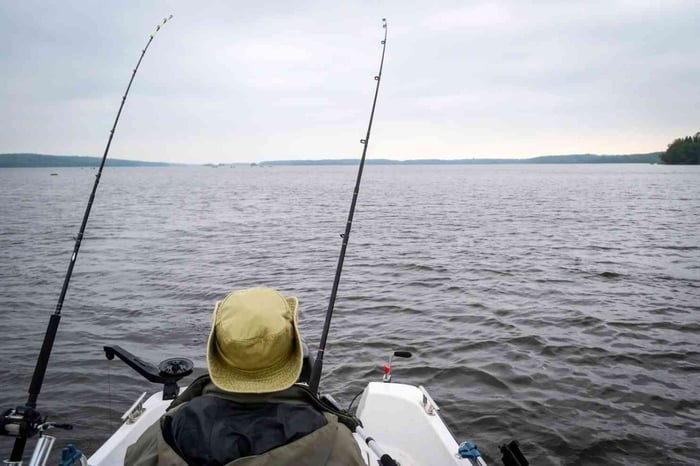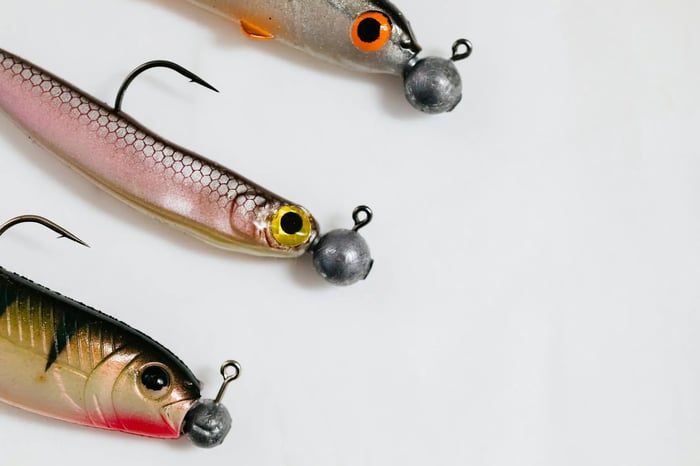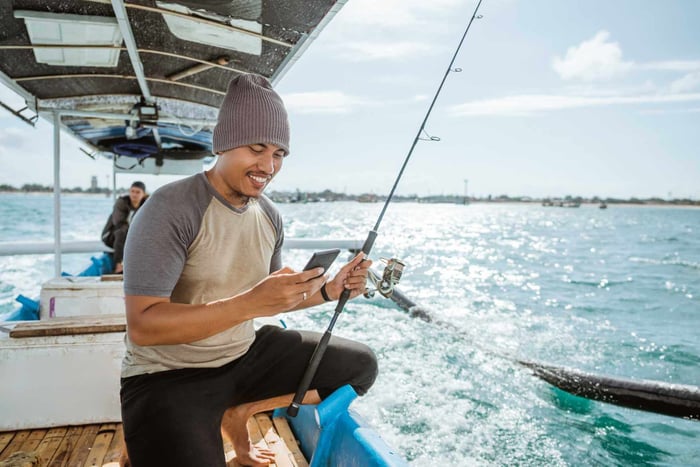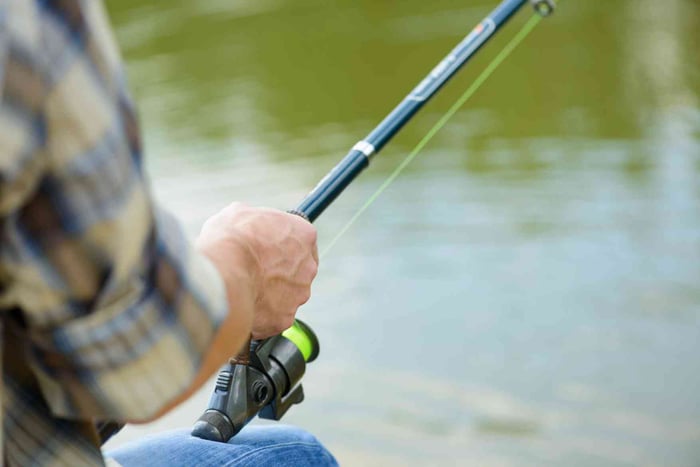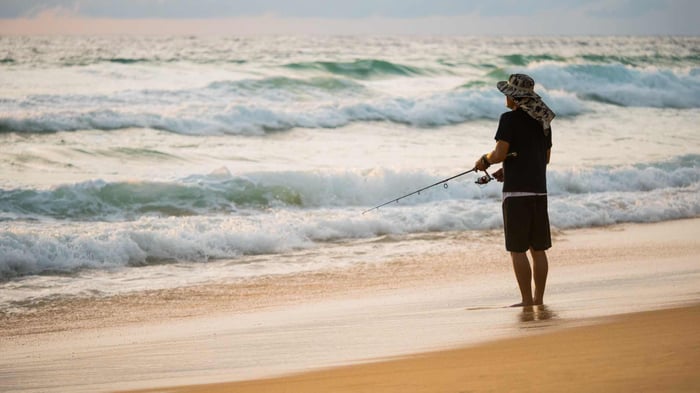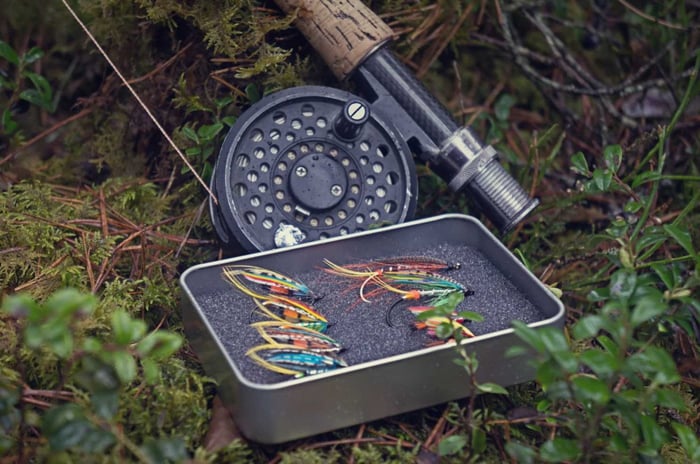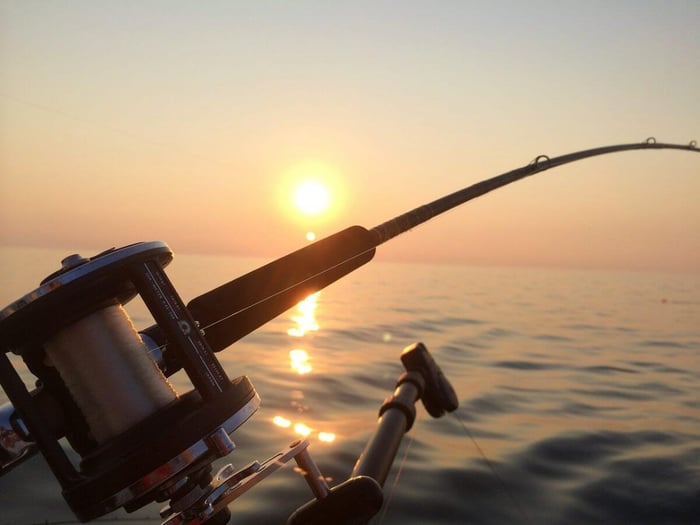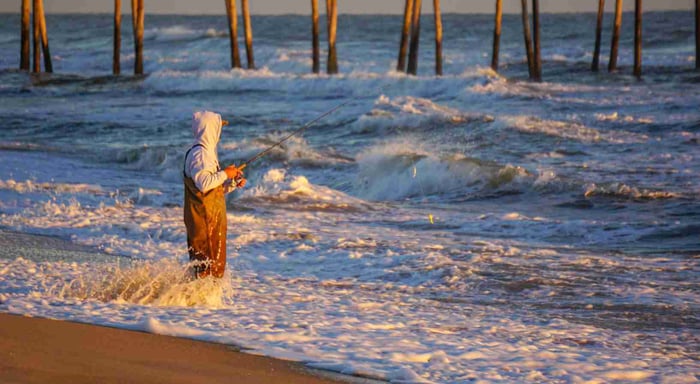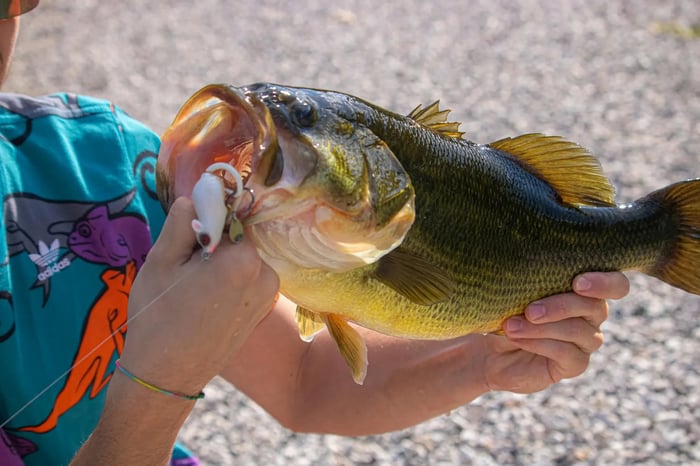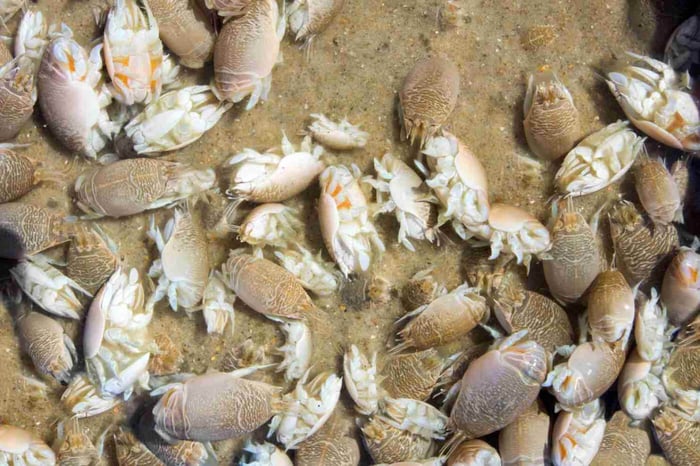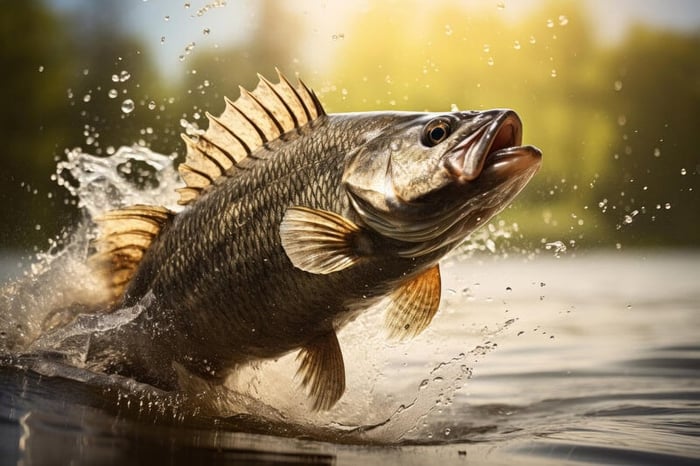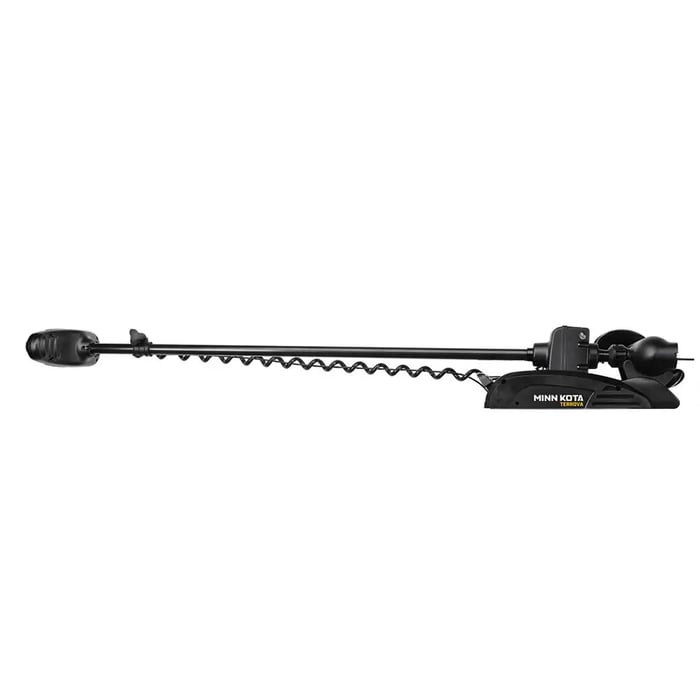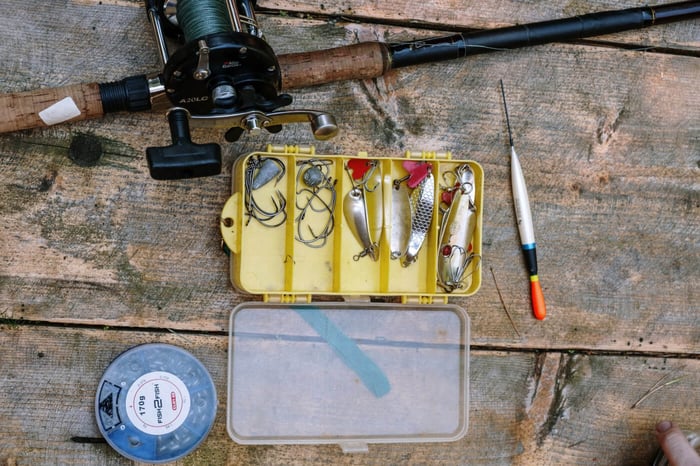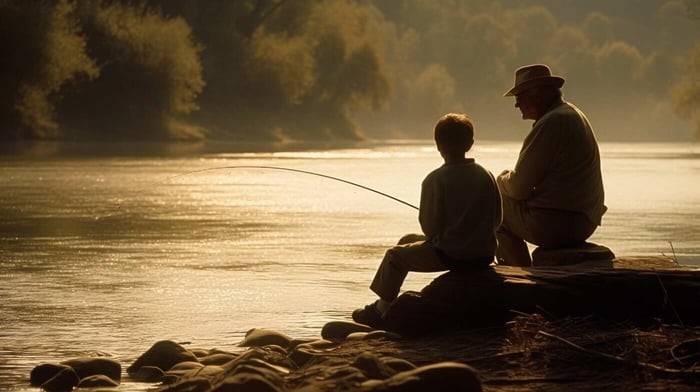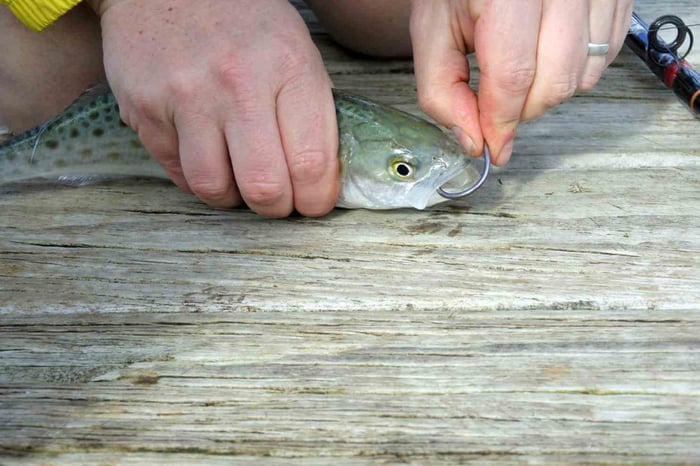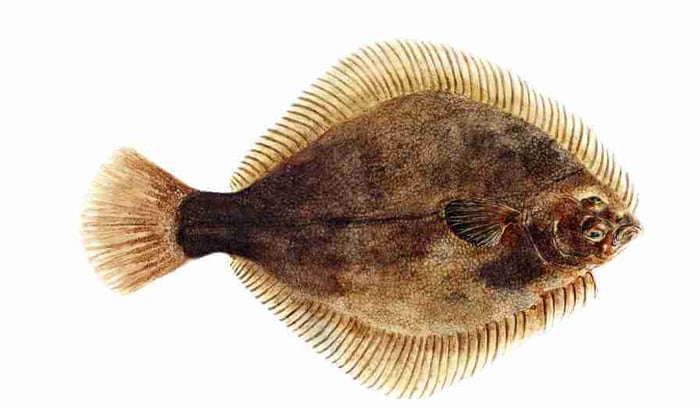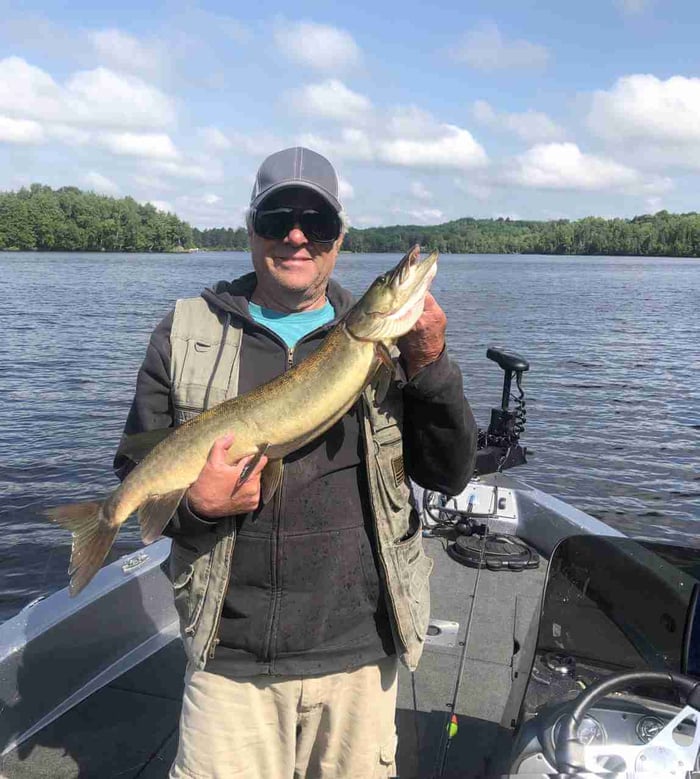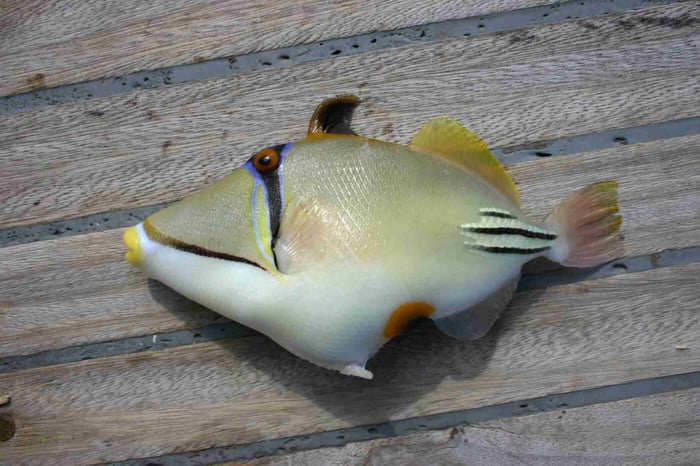Fishing rigs are tools that every angler needs to know about.
A rig is a precise tackle setup regardless of the hooks, weights, floats, or baits that define how you roll out the bait or lure to the fish.
In fact, there are many kinds of rigs, all of which have different duties; in some, they are used to catch certain types of fish, while in others, they consider the water conditions.
Whatever type of water you are fishing in, if you are fishing in shallow or deeper waters, and whether you’re targeting fish that are at the top or down on the bottom there is always a rig for the job.
This article gives details on the commonly used fishing rigs, how to rig, and which rig is suitable for which fish.
The Most Popular Fishing Rig
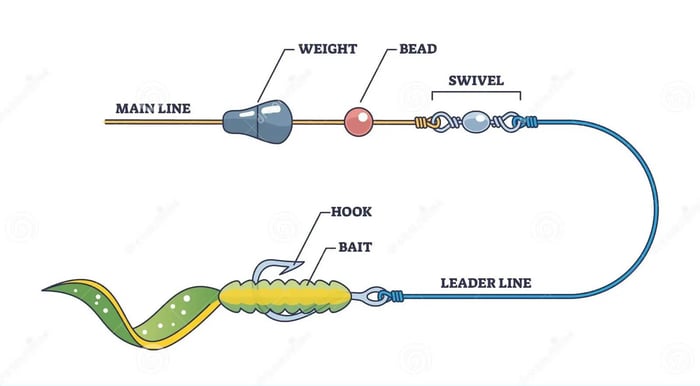
When evaluating the advantages of the most popular fishing rig, the Carolina Rig must be considered. Anglers consider such a setup excellent because it works well in various fishing settings and can be used to catch various fish.
The Carolina Rig has turned out to be a popular choice for anyone targeting fish that live close to the deep structures of water bodies such as lakes, rivers, and even saltwater flats. They focused on its design so that the bait floats a little close to the water's surface to be seen by the fish but not reach the bottom to get stuck.
This rig stands out primarily because it is versatile, simple to set up, and functional in fresh and saltwater environments. When fishing for giant bass or small ones, redfish or flounder among the inshore fish, the Carolina Rig offers a consistent method of deploying soft bait, worms, or live baits.
Now is the time to understand what makes the Carolina Rig one of the most used rigs among anglers.
Why It’s Popular
🗸 Covers more water:
With this rig, you may cast far and repeatedly recover your line to scout for fish in stripes and other spots in the middle of the body of water.
🗸 Maintains bottom contact:
The bullet weight means the rig stays on the bottom, which is ideal when fishing for species that feed close to or on the bottom.
🗸 Effective for multiple species:
This rig is perfect for freshwater bass and saltwater redfish, which feed along the bottom. It is especially popular among those targeting black, white, or striped bass, largemouth or spotted bass, catfish, flounder, or snook.
🗸 Adaptable to different waters:
Because of its versatility, the Carolina Rig can be used in freshwater lakes, ponds, estuaries, and saltwater flats across the region.
How It Works
Carolina Rig enables the bait to swim, but the weight maintains its position on the bottom of the water. The sliding bullet sinker allows the hook to stay in contact with the substrate while the soft plastic worm or live bait slightly bounces above the water surface, looking rather natural.
Bullet Sinker and Bead: The bullet-shaped weight makes it easier for the rig to slide along the bottom. Adding a small bead between the sinker and swivel serves two purposes: it shields the knot from damage and produces a clicking sound that may attract fish.
Swivel Connector: A swivel isolates the weighted mainline from the leader, avoiding twists and allowing the bait to move naturally.
Leader and Hook: Often, a fluorocarbon or monofilament leader is incorporated to maintain the bait off the bottom and attract the prey as if it were its food. It will also depend on the bait; worms: most anglers use offset worm hooks for soft plastics, while live bait circle hooks.
This non-sinking feature makes it look like a free-floating fish or worm, which all bottom-foraging fish cannot resist.
Best Uses for the Carolina Rig
| Fishing Over Structure:
The Carolina Rig is perfect when fishing over sand, rock, or ground areas because the sinker remains at the bottom while the bait floats slightly above it. This makes it ideal for choosing largemouth bass and catfish, which feed near submerged objects such as logs and stones.
| Dragging Technique:
Some anglers use the Carolina Rig repeatedly by slow retrieving and applying short jerk twists. This motion causes a sand or mud cloud on the bottom, mimics some small prey, and lures the other fish around them.
| Open Water Search:
When fish are scattered, the Carolina Rig lets you cast far and wide and search for feeding fish. This method is most effective when fishing across vast and open flats or large stretches of lake bottom.
| Saltwater Applications:
Coastal species such as redfish, speckled trout and flounder are common targets of anglers who use the Carolina Rig while fishing shallow waters such as; tidal flats and estuaries. Using live shrimp or cut bait the rig places the bait just off bottom and well within reach of feeding fish.
The Simplest Fishing Rig
The basic bobber rig is the simplest and most widely used technique for ordinary anglers who wish to use simple techniques. This rig is best suited for beginners, kids, and anybody who wants to catch small fish easily.
Due to its ease of use and setup, the Basic Bobber Rig is suitable for slow and steady fishing trips. It won’t leave you guessing when one fish has taken the bait.
It is also suitable for quite a number of water conditions, such as freshwater ponds and saltwater lakes that produce bluegills, sunfish, and trout, among others.
Why It’s Simple
The Basic Bobber Rig’s popularity comes down to its ease of use and minimal setup requirements:
🗸 Minimal Components:
The rig requires just a few essentials: a hook, bobber, and a small sinker. It has a very simple structure, and no high-cost equipment is needed to use it in the facility.
🗸 Easy to Cast:
As it is a small and light rig, it is easy to cast, and those still learning to cast might not notice much difference in placement.
🗸 Visibility of Strikes:
The bobber makes it easy to see since it can be physically observed. Since the bait is dangling from the fishing line, there is no need to constantly check whether or not a fish has taken the bait; when a fish bites, either the bobber bobs up and down, or it sinks, indicating to one to begin reeling in.
🗸 Beginner-Friendly:
This simple and child-friendly rig offers clear signs of fish bite and is ideal bass fishing for for kids and beginners.
How It Works
The Basic Bobber Rig suspends the bait at a given depth, making it easy for the fish to identify in the water. Here’s a step-by-step breakdown of how it functions:
Bobber Floats on the Surface:
It bobs on the water and gives the position of your baited hook so one is able to spot movements indicating bite.
Sinker Keeps Bait in Place:
The small sinker is placed just below the bobber to help hold the line down and keep the bait at the hook point at the proper depth, either below the surface or the bottom.
Strike Indicator:
Since a fish is in contact with a hook and bait, it pulls on the line when it bites, and the bobber gets dipped or moves. This is where the fish is visible to the angler to start pulling the bait hook out to harvest the fish.
Best Uses for the Basic Bobber Rig
The Basic Bobber Rig performs best under specific fishing conditions or for certain types of fish. Here are some ideal scenarios for using this rig:
Calm Waters:
Due to its position on the surface, the rig is more effective in still or slow-moving water, where the bobber isn’t dragged excessively by current or wave action. This rig works best in ponds, lakes, or small rivers with large and attractive weeds.
Shallow to Mid-Depth Fishing:
Designed for fishing in extremely shallow water, the Basic Bober Rig's best water depth is between a few feet and about ten feet, where most fish are usually expected to feed.
Targeting Small to Medium Fish:
This rig targets sunfish, bluegill, crappie, and small trout. These species feed in shallow waters, allowing them to see the suspended bait easily.
Beginners and Casual Fishing:
It is also possible to fully set it up and manage its operation, which is why this rig is suitable for fishing for beginners and families preparing for a relaxing day by the water. The bobber is also easy to see, so children can quickly learn the difference between a bite and when to bring their fish in.
How to Set Up Different Rigs
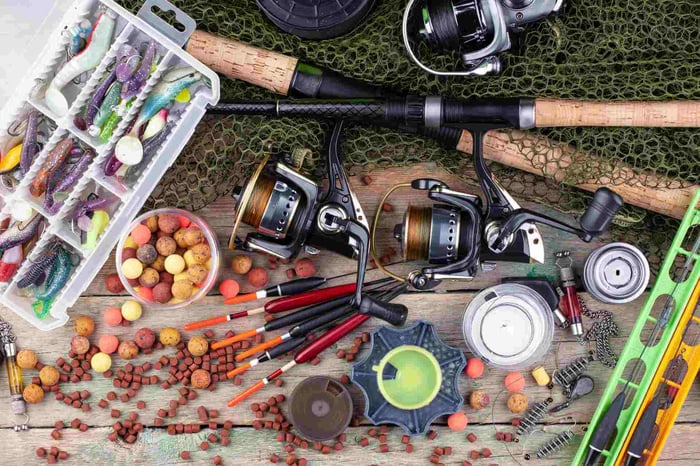 To set several fishing rigs may seem quite complicated.
To set several fishing rigs may seem quite complicated.
Nevertheless, the purpose plays a fundamental role in determining whether seasoned fishers change their behavior or approach while fishing in consideration of the fish and water.
Each rig style has a distinct benefit, especially when fishing in deep water or areas with thick vegetation.
Here, you will find information on some of the top enticing and popular setups, together with a guide on how to use each.
Carolina Rig Setup
As among the bottom-feeder fish that stay close to the bottom, such as bass and redfish, Carolina Rig is versatile and effective. Due to its unique construction, bait can suspend over the substrate and be noticed by fish without getting hooked.
- Bullet sinker (½ ounce or heavier)
- Plastic bead (optional, but helps protect the knot and adds an audible clicking sound that can attract fish)
- Swivel
- Leader (fluorocarbon or monofilament, 12–24 inches long)
- Hook (offset worm hook for soft plastics or circle hook for live bait)
- Soft plastic bait (like lizards, worms, or crawfish)
- Thread the sinker onto your mainline. The bullet sinker helps keep the rig in place on the bottom and provides better control.
- To protect your knot, add a bead directly after the sinker and create an appealing click sound in the water.
- To begin, fasten the mainline to one swivel end. This makes the line more flexible and less likely to twist.
- Place the other end of the swivel on the leader. The leader length may expand depending on the water depths and the distance between the hook and the bottom.
- Depending on your target species, attach the live bait or soft plastic hook to the leader.
Drop Shot Rig Setup
The Drop Shot Rig is appropriate when fishing deep water or in the water column. Because of its delicateness, it is the best rig for fishing bass, crappie, or any fish in the middle of the water column. It is commonly used in clear water or when the water is calm.
- Small hook (either worm or drop-shot hook at that).
- Weight of drop shot (cylindrical weight or teardrop weight is typical).
- Worms, minnows, or other small profile baits or lures. The secret is using soft plastics rigged to swim or float.
- Use a Palomar knot to attach the hook to the main line. A long tag end, 12-18 inches, should be left.
- Insert the drop shot weight on the tag end, and then the bait will stay above the weight to lure suspended fish.
- Prepare the soft plastic bait to resemble the prey you intend to lure.
Texas Rig Setup
Components:
- Bullet sinker (¼ or larger for depth and for the thickness of the top water layer)
- Offset worm hook
- Soft-bodied plastics (worms, creatures baits, or crawfish imitations)
- Insert the bullet sinker on your mainline so that the cone-like part of the bullet sinker is towards the hook.
- Screw the hook to the end of the line.
- Place the hook through the head of the soft plastic bait and turn it so the hook tip goes back into the bait, making it weedless.
Slip Bobber Rig Setup
The Slip Bobber Rig is handy for fishing where the fish feed at different depths in water and does not require frequent changes when the depth changes. This setup is beneficial for fish such as trout, walleye, and panfish in lakes, ponds, and slow-flowing rivers.
- Slip bobber
- Bobb stop (this is to help hold the bobber to the desired position on the line)
- Split shot weights (needed so that the bait can sink properly).
- Small hook (for live bait)
- To achieve the desired thickness for your float, slide the bobber stop onto your mainline.
- After positioning the slip bobber on the main line and holding onto the line, insert split shot weights to submerge the bait in the water.
- Attach a worm or a minnow as live bait, then attach the hook to the end of the line.
Three-Way Rig Setup
The Three-Way Rig is most suitable for use where water flows or in shallow waters, such as river or tidal areas. This setup ensures that you will place the bait very close to the bottom of the water, hence the catfish, walleye, or saltwater bottom feeders. It is also good for surf fishing when you wish to fish bottom-dwelling fish species.
- Three-way swivel
- Two leaders of different lengths
- Hook and sinker
- Fasten your main line on one of the eyes of the swivel to serve as the primary line you link the others to.
- Fasten a short leader with a sinker at the second eye of the swivel. This helps to keep the rig stationary at the bottom of the sea bed.
- Put a longer leader with a hook attached to the third eye of the swivel. The longer leader allows giving your bait more free movement in the water.
- Slide the hook through a strip of fresh-cut bait, rubber worms, or squeakers similar to that used for bottom-feeding fish.
What Rig for What Fish?
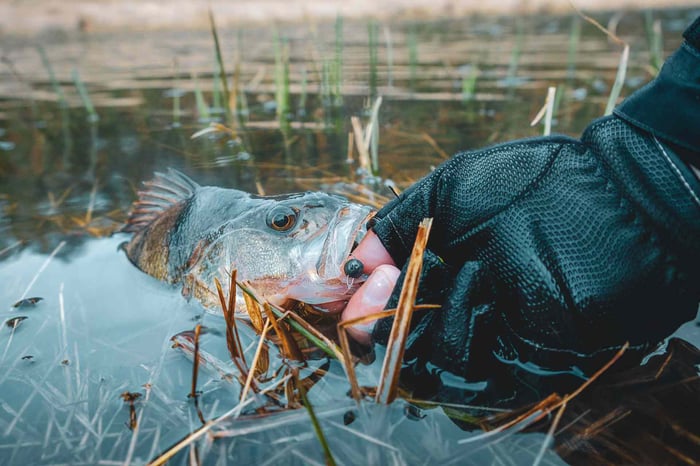 Choosing the right rig improves your chances of capturing some species of fish.
Choosing the right rig improves your chances of capturing some species of fish.
Fish have characteristic actions, living environments, and feeding habits; some are more responsive to certain bait-holding equipment.
Here, we look at which rigs are best employed when fishing for some of the most sought-after game fish species like bass, catfish, trout, redfish, and panfish.
To help you succeed on the water, you will also receive information on the best times and locations to use each rig.
| Bass
- Texas Rig: It is effective in thick covers where the bass mostly lies.
- Carolina Rig: It is extensive and gets to a bass that hovers on the bottom.
- Drop Shot Rig: Works well when bass are off the bottom in deeper waters.
| Catfish
- Three-Way Rig: Ideal for the bottom-feeder catfish.
- Santee Cooper Rig: Maintains the bait off the bottom consistently, which helps reduce snags.
- Slip Sinker Rig: They do it without any pullback or feeling the bait from the other end to enable the catfish to catch bait.
|Trout
- Slip Bobber Rig: Perfect for fishing trout, which is mostly preferred in lakes and ponds.
- Inline Spinner Rig: They lure trout because they imitate small fish.
- Bottom Rig: Ideal for fishing trout, where the river contains powerful currents.
| Redfish and Saltwater Species
- Carolina Rig: Responsive for redfish, speckled trout, and other inshore species of fish.
- Popping Cork Rig: Lures the fish with sound while keeping the bait on the surface.
- Fish Finder Rig: Ideal for surf fishing and, therefore, used to catch large predators off the coast.
| Crappie and Panfish
- Basic Bobber Rig: Especially effective for sunfish, bluegill, and crappie.
- Drop Shot Rig: Special purpose design for fishing on structures and objects that are standing vertically on the water column.
- Spider Rig: Can be used while fishing for crappie since it is able to hold multiple baits at the same time.
Choosing the Right Rig Based on Conditions
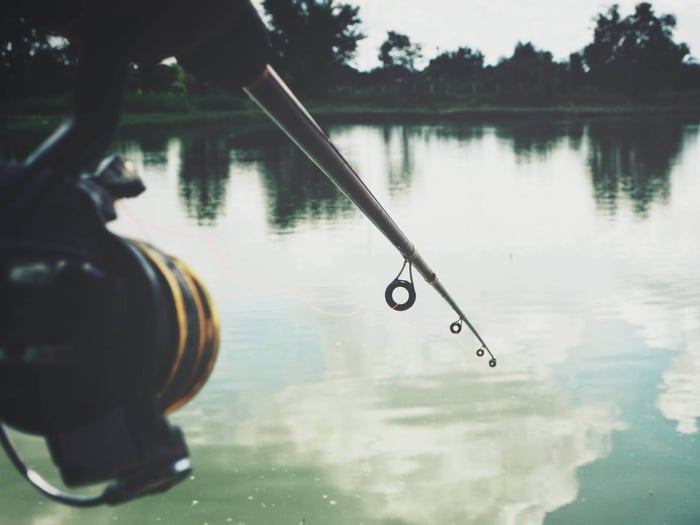 Making the right fishing rig decision isn’t just about the type of fish you’re after but also about considering the waters and environment where you will be fishing.
Making the right fishing rig decision isn’t just about the type of fish you’re after but also about considering the waters and environment where you will be fishing.
In zones of high water density, fish are inclined to gather in areas of low light, and thus, establishing some structure for them to use as shade is crucial.
The following points will help any anglers in selecting the most appropriate type of rig when appropriate bait presentation to the prevailing conditions should be made:
Muddy Water
The bait should be kept somewhat higher and more noticeable because it is harder to see in murky or unclean water. In low-light conditions, use a Carolina Rig or Popping Cork Rig because the bait is constantly visible, floating above the bottom and bumping, which provides vibrations that attract the fish.
Clear Water
Fish are very careful because they can see well, especially in water with low turbidity. As a general rule, light rigs such as the Drop Shot Rig or the Texas Rig do not present a noisy profile to the fish and, as such, do not scare the fish away easily. Use colors that are close to nature and small baits that the fish cannot easily see.
Heavy Cover
When fishing in such regions, especially where there is a lot of vegetation and underwater structures, it is highly recommended to use a weedless rig. It is advisable to use a Texas Rig or a Punching Rig where these baits swim because the weedless nature of the method helps fish through heavy cover where big fish live.
Deep Water
When fishing water columns where fish are suspended in deeper water, the Drop Shot Rig is top-notch because it allows the bait to be dropped off and maintain a vertical position. This rig allows you to fish accurately at various depths and in deep water structures such as deep seas, rivers, lakes, and other bodies of water.
Conclusion
 Fishing rigs are some of the most important fishing equipment that any angler wouldn’t want to be without; whether you are an amateur or a professional angler, you must be able to tell how to set the rig or even when to use it.
Fishing rigs are some of the most important fishing equipment that any angler wouldn’t want to be without; whether you are an amateur or a professional angler, you must be able to tell how to set the rig or even when to use it.
From the very effective Carolina Rig to the Basic Bobber Rig, every rig has its specialties of use. Fishing requires you to know which fish you are targeting and the conditions prevalent when fishing to select the best fishing rig.
This way, they can catch nearly everything: the go-to fish, catfish, trout, and redfish. The more applicable knowledge of rigs, the better and more fruitful the fishing trip will be.
Pick up your equipment, try these out, and discover which suits you best!
